


CATHERINE (II) THE GREAT 1729 -
EMPRESS OF RUSSIA 1762 -
xxxxxThe reign of Catherine the Great of Russia, an intelligent and powerful leader, saw a substantial increase in the size of the empire. Aided by such able men as her military commander Aleksandr Suvorov, her foreign minister Nikita Panin, and her court favourite Grigory Potemkin, she won two wars against the Ottoman Empire -
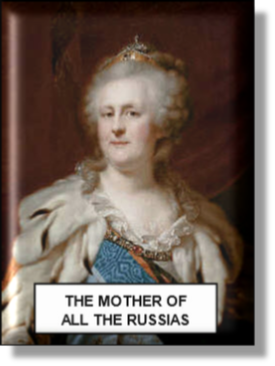 xxxxxCatherine was born Sophie Augusta Fredericka, the daughter of a German prince. She went to Russia at the age of 15 to be married to Peter, heir to the Russian throne. Her husband, an unstable individual, succeeded the Empress Elizabeth in December 1761, but was overthrown by the Imperial Guards and murdered within seven months. It was then that Catherine took over the reins of government. She proved an able, domineering leader, with a lively intelligence and an abundant supply of energy. Under her rule the process of westernisation, begun by Peter the Great, was continued, and the boundaries of the Empire were substantially expanded. In the west, for example, vast areas of land were acquired from the three partitions of Poland, whilst in the south Catherine fulfilled one of Russia's age-
xxxxxCatherine was born Sophie Augusta Fredericka, the daughter of a German prince. She went to Russia at the age of 15 to be married to Peter, heir to the Russian throne. Her husband, an unstable individual, succeeded the Empress Elizabeth in December 1761, but was overthrown by the Imperial Guards and murdered within seven months. It was then that Catherine took over the reins of government. She proved an able, domineering leader, with a lively intelligence and an abundant supply of energy. Under her rule the process of westernisation, begun by Peter the Great, was continued, and the boundaries of the Empire were substantially expanded. In the west, for example, vast areas of land were acquired from the three partitions of Poland, whilst in the south Catherine fulfilled one of Russia's age-
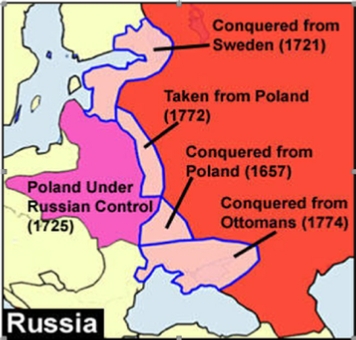 xxxxxThe advance southwards was by means of two successful wars against the Ottoman Empire. In the first one, begun in 1768, the Russians defeated the Turkish fleet at the Battle of Chesme in 1770, captured Azov, and overran Moldavia, Bessarabia and the Crimea. Byxthe Treaty of Kutchuk-
xxxxxThe advance southwards was by means of two successful wars against the Ottoman Empire. In the first one, begun in 1768, the Russians defeated the Turkish fleet at the Battle of Chesme in 1770, captured Azov, and overran Moldavia, Bessarabia and the Crimea. Byxthe Treaty of Kutchuk-
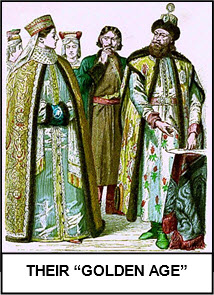
xxxxxAt home, she appeared to welcome the ideas of the Enlightenment, but her liberal views were little more than skin deep. Recognising that the nobility and gentry were the basis of her power, she showered them with privileges, titles, offices of state and the grant of land. It was their “golden age”. In contrast, and despite her promises, she did nothing to ease the plight of the serfs, the vast majority of her people. Indeed, the Pugachev Rebellion of 1773 -
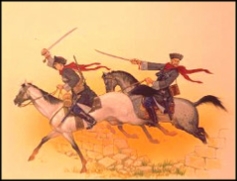
xxxxxHer domestic reforms went some way to modernising the country, huge though it was. A tireless worker in the service of the state, she instigated a new code of laws, reorganised local administration across the land, encouraged the modernisation of industry and agriculture, and did much to promote trade. And for reasons of security, she disbanded the Cossacks and integrated their members into the regular army, a move which, in the long term, strengthened the forces of the crown.
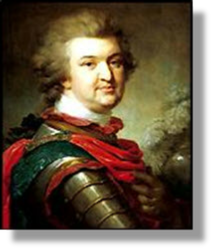 xxxxxAs a ruler she was a good judge of talent, selecting men who became highly capable in their chosen field. Nikita Panin, for example, proved an astute advisor in the conduct of foreign affairs, and Aleksandr Suvorov became her greatest military commander. And in this respect, her private life seems to have played a useful part. She is known to have had numerous love affairs, and whilst her lovers were never allowed to play a dominant role in the affairs of state, she did make use of some of them. Indeed, her special favourite, Grigory Potemkin (1739-
xxxxxAs a ruler she was a good judge of talent, selecting men who became highly capable in their chosen field. Nikita Panin, for example, proved an astute advisor in the conduct of foreign affairs, and Aleksandr Suvorov became her greatest military commander. And in this respect, her private life seems to have played a useful part. She is known to have had numerous love affairs, and whilst her lovers were never allowed to play a dominant role in the affairs of state, she did make use of some of them. Indeed, her special favourite, Grigory Potemkin (1739-
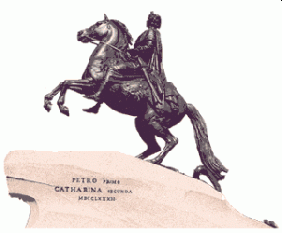 xxxxxCatherine was a well-
xxxxxCatherine was a well-
xxxxxThe full extent of Catherine the Great's success as a ruler is not easy to assess, but by the end of her reign a greatly enlarged Russia was certainly playing a much more prominent and influential role in world affairs. In addition, much improvement had been made in the political administration of this vast country, a key factor in the development of Russia into a modern, European state.
xxxxxAnd her long reign also witnessed an enormous growth in urban development, a sure sign of the country's growing prosperity. More than one hundred new towns were built, and many of the old ones were redeveloped and expanded. She may not have achieved all she set out to do, but no one can question or doubt the strength of her determination to make Russia a powerful and prosperous nation,
xxxxxCatherine died unexpectedly of a stroke in November 1796, and was succeeded by her son Paul, whom, in fact, she had planned to disinherit in favour of his eldest son Alexander. Totally unprepared for his new role, Paul I found no favour with the army nor the nobility, and was assassinated in March 1801. His 23 year old son, coming to the Russian throne as Alexander I, was destined to play a prominent part in European affairs during an eventful reign of twenty-
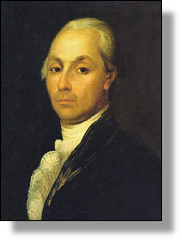
xxxxxIncidentally, Catherine’s repressive measures following the outbreak of the French Revolution in 1789 were made the more drastic by the private publication of Journey from St. Petersburg to Moscow in 1790, a book which contained a bitter attack upon the abuses of her government and the evils of serfdom. Not surprisingly, the Russian author, Aleksandre Radishchev (1749-
Acknowledgements
Catherine: by the Austrian/Italian portrait painter Johann Baptiste Lampi the Elder (1751-
G3a-
Including:
Grigory
Potemkin



